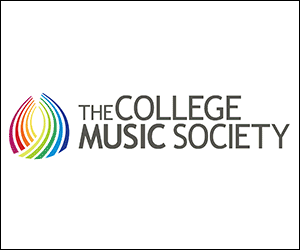Conducting, by Emil Kahn. New York: The Free Press, 1965. (xii, 244 p., 8vo; $6.50).
It has often been said that conducting cannot be taught. Personally, I cannot agree with this statement, and certainly Emil Kahn cannot. However, teaching conducting by means of the written word alone would be difficult in the extreme. (Certainly Mr. Kahn expects that a conductor will himself personally demonstrate the procedures advocated in his book.)
"Conducting" by Emil Kahn is one of the most complete and detailed explanations of conducting that I have seen in print. This work can certainly be used as a textbook, but its greatest value is as a reference text for a conductor who has already embarked on his career.
In his first chapter, the author ably presents his descriptive material about the various rhythmic patterns for conducting. In this chapter as well as in those that follow, Mr. Kahn's choice of examples from music literature is such an extensive one that it will probably not be found in any one library.
In the book, from this point, the author moves rapidly into the manifold techniques of conducting, as he gives the reader some of music's more demanding and difficult literature. Therefore, if a student is to examine all of the compositions referred to, the sheer labor of finding the scores might take hours. Perhaps in his own teaching Mr. Kahn has duplicated the relevant portions of the scores, thus having them readily available for the students' scrutiny. Also, inasmuch as the student conductor is usually not yet able to hear what he sees, a tape recording of each of these examples to be used along with that particular printed score fragment would be an invaluable aid and would make the material more meaningful.
The thoroughness with which Mr. Kahn has attacked the problem of teaching conducting is impressive. In addition to his presentation of the intricacies of baton technique, his remarks about score-reading (including his constant emphasis on the value of clefs for facilitating the reading of transposed parts), and by his insistence on the necessity of training the ear, Mr. Kahn hopes that the student will eventually learn to hear mentally what he sees visually. Although Mr. Kahn does not say so in so many words, one gains the impression that he may be trying to tell the student that one must earn the privilege of conducting.
The section of the book that deals with instruments goes into considerable detail as to strings, with marked emphasis on styles of bowing, and on the intricacies of achieving special effects with the bow. His lucid explanation of articulation for brasses and woodwinds is welcome in a book of this kind. From this point on, Mr. Kahn's ideas about interpretation as well as about the practical details of seating arrangements for ensembles add to the whole work the kind of thoroughness often lacking in the teaching of conducting.
The sections on choral and band conducting are considerably shorter and less detailed, but Mr. Kahn is of the opinion that the chief problems in these areas can be solved if the student has already had experience in conducting orchestral groups. Mr. Kahn is emphatic in stating that the same technique used for orchestra conducting will function for both chorus and band. However, he does recognize that the voice presents special problems that require study. He points out that young choral conductors often believe that choral directing is different from that of directing instrumental ensembles. He even acknowledges that when employing an unorthodox technique the choral conductor can achieve good results with his singers. He makes the observation that if the same conductor wishes to perform a choral work using an instrumental accompaniment, while employing a conducting technique understood only by his singers, the resulting direction may be haphazard and confusing to his instrumentalists.
All in all, Mr. Kahn has given us a worthwhile text and workbook on conducting. Even if it is used only in part, it is particularly suitable for college and conservatory classes, and is of definite value to anyone wishing to review and strengthen his knowledge of the art of conducting.



